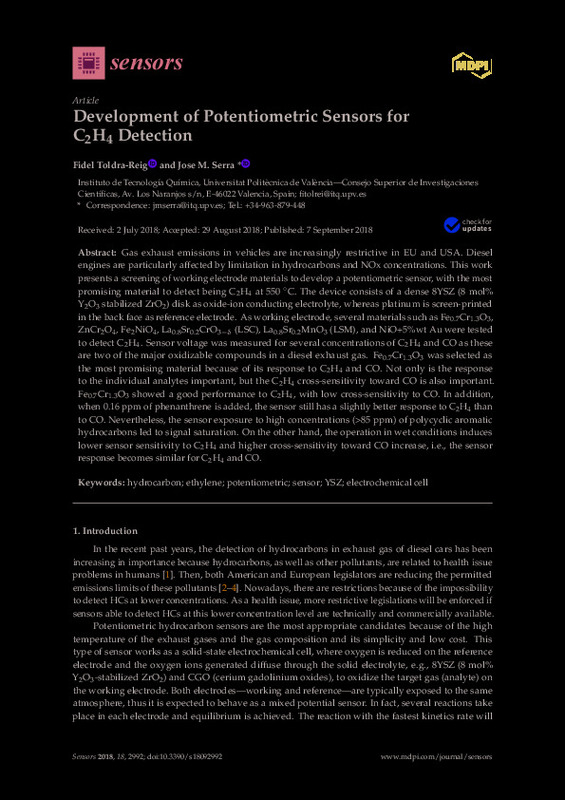JavaScript is disabled for your browser. Some features of this site may not work without it.
Buscar en RiuNet
Listar
Mi cuenta
Estadísticas
Ayuda RiuNet
Admin. UPV
Development of Potentiometric Sensors for C2H4 Detection
Mostrar el registro completo del ítem
Toldrá-Reig, F.; Serra Alfaro, JM. (2018). Development of Potentiometric Sensors for C2H4 Detection. Sensors. 18(9):1-14. https://doi.org/10.3390/s18092992
Por favor, use este identificador para citar o enlazar este ítem: http://hdl.handle.net/10251/190451
Ficheros en el ítem
Metadatos del ítem
| Título: | Development of Potentiometric Sensors for C2H4 Detection | |
| Autor: | ||
| Entidad UPV: |
|
|
| Fecha difusión: |
|
|
| Resumen: |
[EN] Gas exhaust emissions in vehicles are increasingly restrictive in EU and USA. Diesel engines are particularly affected by limitation in hydrocarbons and NOx concentrations. This work presents a screening of working ...[+]
|
|
| Palabras clave: |
|
|
| Derechos de uso: | Reconocimiento (by) | |
| Fuente: |
|
|
| DOI: |
|
|
| Editorial: |
|
|
| Versión del editor: | https://doi.org/10.3390/s18092992 | |
| Código del Proyecto: |
|
|
| Agradecimientos: |
|
|
| Tipo: |
|









